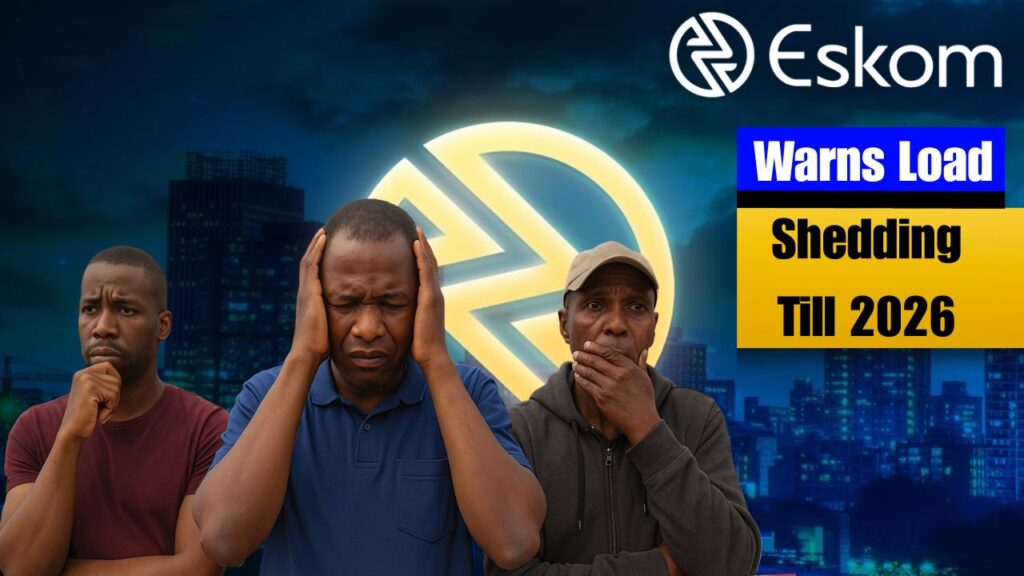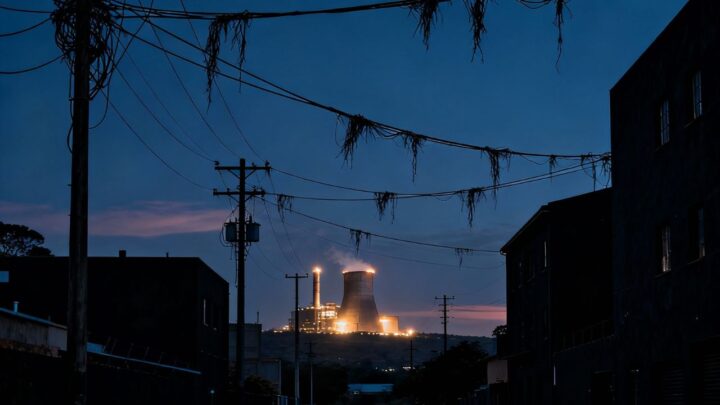Eskom has once again sounded the alarm about South Africa’s fragile power grid, warning that load shedding could persist until at least mid-2026. Despite ongoing maintenance efforts and investment in infrastructure, the utility giant admits that generation capacity remains dangerously tight. Ageing coal plants, inconsistent performance at key stations like Medupi and Kusile, and growing electricity demand have all intensified the strain. With emergency reserves running low and planned maintenance backlogs piling up, South Africans are being urged to prepare for a prolonged period of intermittent outages that could affect homes, businesses, and public services nationwide.

Why South Africa’s Power Grid Is Under Extreme Pressure
The national grid is struggling to balance electricity supply and demand. Eskom reports that breakdowns in aging power stations are occurring more frequently, cutting generation output below safe levels. Coal-fired plants, which provide most of South Africa’s electricity, are plagued by inefficiency and maintenance delays. Renewable energy sources, though expanding, are still insufficient to cover the shortfall. Experts warn that the grid’s instability may worsen as economic activity rises, pushing power demand higher. Unless substantial new capacity is added, South Africa may continue facing load shedding until mid-2026, affecting industries, schools, and even hospitals.
Eskom’s Plan to Stabilize Power Supply by 2026
To restore stability, Eskom has outlined a multi-phase recovery plan involving increased maintenance budgets, faster integration of renewable projects, and partnerships with private energy providers. The utility is prioritizing upgrades at Medupi, Kusile, and Koeberg power stations, alongside expanding solar and wind generation under the Renewable Independent Power Producer Programme (REIPPP). Government interventions, including the Energy Action Plan, are also focused on fast-tracking generation licenses and grid expansions. However, the execution of these projects faces logistical and financial hurdles, meaning South Africans may not see a full end to power cuts until late 2026.
Impact of Ongoing Load Shedding on South Africans
Continuous power cuts have far-reaching consequences for South Africa’s economy and daily life. Businesses face mounting losses, especially in the manufacturing and retail sectors, while small enterprises struggle to afford backup generators. Households endure long hours without power, disrupting education, healthcare, and food storage. Many municipalities, already burdened by poor infrastructure, face secondary crises such as water supply interruptions. Economic experts estimate that load shedding costs the country billions in productivity each year. For ordinary citizens, the uncertainty has become part of daily life, with few signs of immediate relief despite Eskom’s reassurances.

Government and Public Reactions to Eskom’s Warning
Public frustration continues to grow as Eskom’s repeated promises of stability fail to materialize. Opposition parties have demanded greater transparency in energy planning, while citizens call for accountability and faster action. The South African government insists that new energy investments, particularly in renewables, will soon ease the burden. Yet, experts remain skeptical, citing delayed timelines and governance issues. Civil groups urge stronger oversight of Eskom’s spending and clearer communication about expected load shedding stages. Until new capacity is built and corruption tackled, the warning that load shedding could persist until mid-2026 appears increasingly realistic.
| Factor | Current Status | Impact on Grid |
|---|---|---|
| Coal Plant Breakdown | Frequent and unpredictable | Reduces generation capacity |
| Renewable Expansion | Slower than expected | Insufficient to meet demand |
| Government Energy Plan | In implementation phase | Potential long-term stability |
| Load Shedding Frequency | Stage 2–6 recurring weekly | Disrupts homes and businesses |
| Projected Recovery | By mid-2026 (estimated) | Gradual return to stability |
FAQs
1. Why is Eskom warning about load shedding until 2026?
Because generation capacity remains below national demand due to plant failures and maintenance delays.
2. What is being done to fix South Africa’s electricity crisis?
Eskom and the government are expanding renewable energy, upgrading coal plants, and inviting private investment.</p






